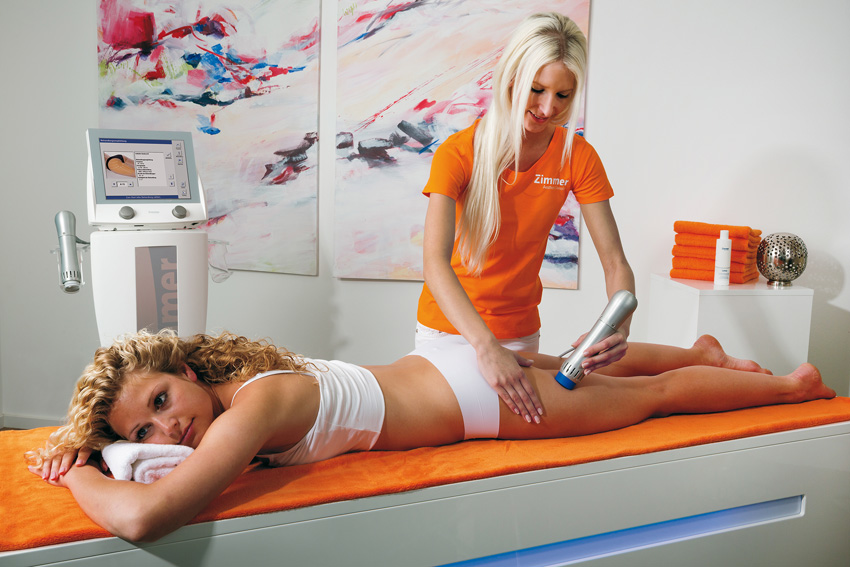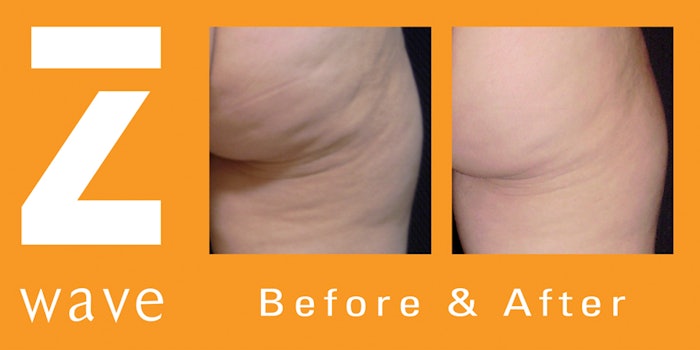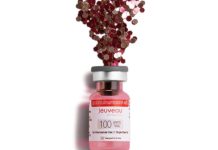“Patient satisfaction exceeds 75%. For cellulite, this is quite impressive, especially for a non-invasive therapy that it is so difficult to otherwise effectively treat, and where patient expectations are more difficult to manage.” Dr. Anna Buinewicz

Radial pulse technology (RPT) has been used for many years in the treatment of soft tissue injuries such as tendinitis, fasciitis, and panniculitis. During the treatment of women’s soft tissue injuries of the upper leg, improvement in the appearance of cellulite was a pleasant side effect, and thus RPT began its broad use in the field of aesthetic medicine. In addition to cellulite, RPT has been used more recently to treat injuries, side effects, and complications after aesthetic procedures such as noninvasive lipolysis, surgical liposuction, capsular contractures and abdominoplasty. For these conditions and their side effects, reports show quicker, easier recovery and even improved outcome.
Zimmer MedizinSysteme, a 50-year-old, German-based company, makes several different versions of RPT; Z Wave is best suited for use in aesthetics. Z Wave disperses high-energy acoustic waves up to 4-cm deep into fat and connective tissues, relaxing and lengthening septae, and decreases fat cell size. These sound waves are strong enough to trigger a healing response, resulting in angiogenesis and collagen synthesis. Ultrasound images show smaller fat cells, less intracellular fluid, and thickened connective tissues making for a smoother skin surface. RPT is noninvasive, painless, with no downtime or consumables, and can be operated by any back-office staff. A series of Z Wave treatments for cellulite typically entails ten 30-minute treatments over a three-to-four-week period.

According to Anna Buinewicz, MD, of Buinewicz Cosmetic Surgery and MedSpa, “About 25% of our patients are seeking improvement of the appearance of cellulite…. In addition to improving microcirculation and lymphatic drainage, which are key aspects of cellulite, shockwave therapy disrupts the underlying fibrous septal network, restoring the elasticity of the fibrous bands and reducing the lumpy appearance.”
Further, Dr. Buinewicz added, “Patient satisfaction exceeds 75%. For cellulite, this is quite impressive, especially for a noninvasive therapy that is so difficult to otherwise effectively treat.”
Ross Kaplan, MD, of Camarillo, CA, stated, “It’s really the first cellulite reduction system that has delivered consistent results in our hands. More importantly, the patients are extremely satisfied and in addition to repeating treatments, they are telling their friends about it….the Z Wave literally paid for itself in its first months.”

Fee-for-service procedures have become increasingly attractive in dermatology. Nearly 80% of women have cellulite in their lifetime, making cellulite reduction a great noninvasive option.
Z Wave treatments are easy to learn, can be performed by support staff, and are extremely safe and painless.
Adding this kind of treatment as a first venture into aesthetics may be the least disruptive change in a medical dermatology office. In addition, the initial investment for a Z Wave is at a fraction of that required for systems purchased for aesthetics. At under $30,000, or a lease payment of about $600 per month, return on investment is often rapid.






